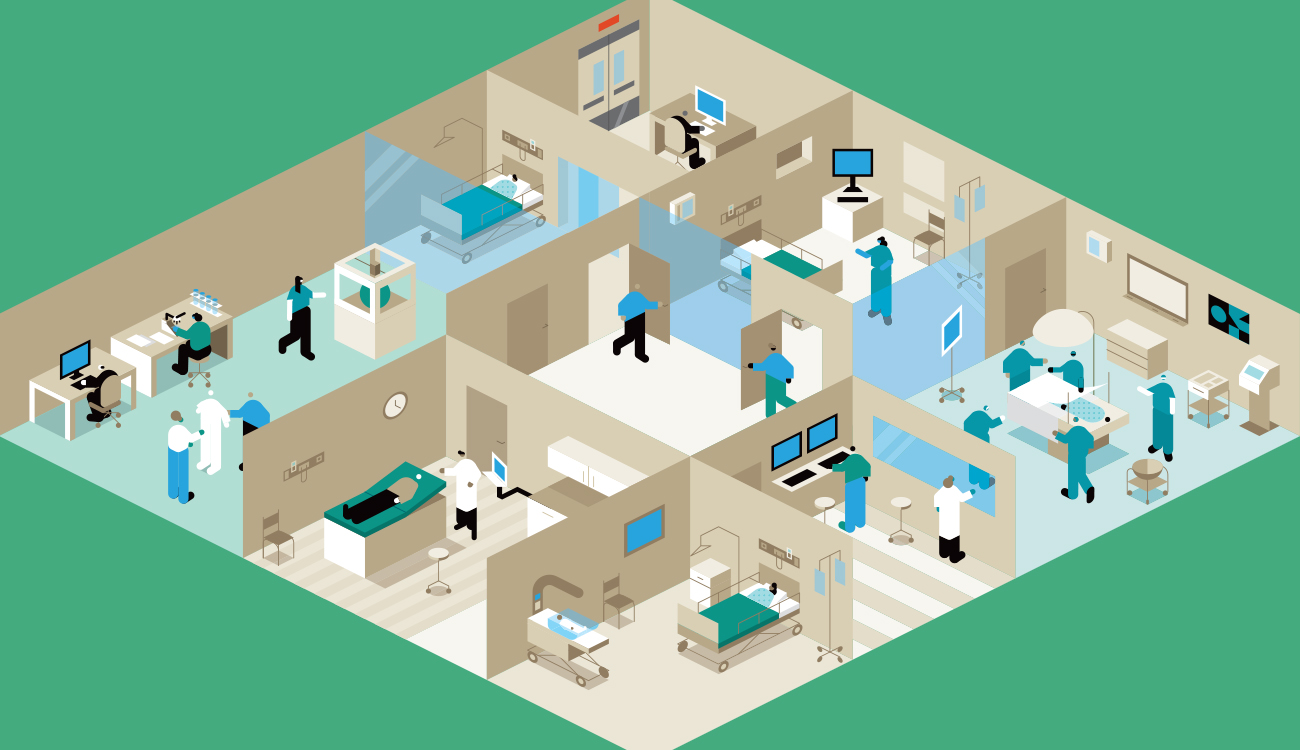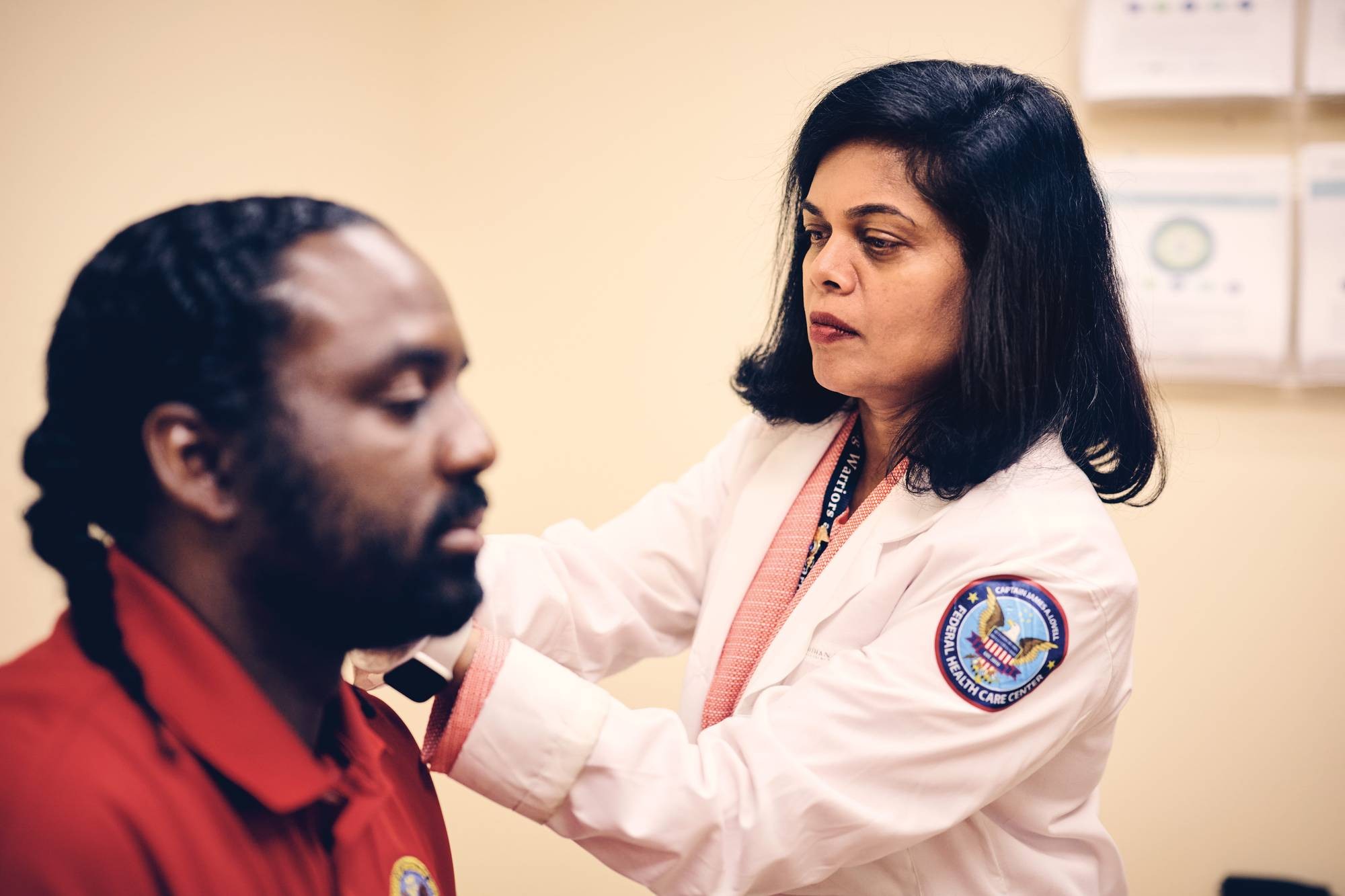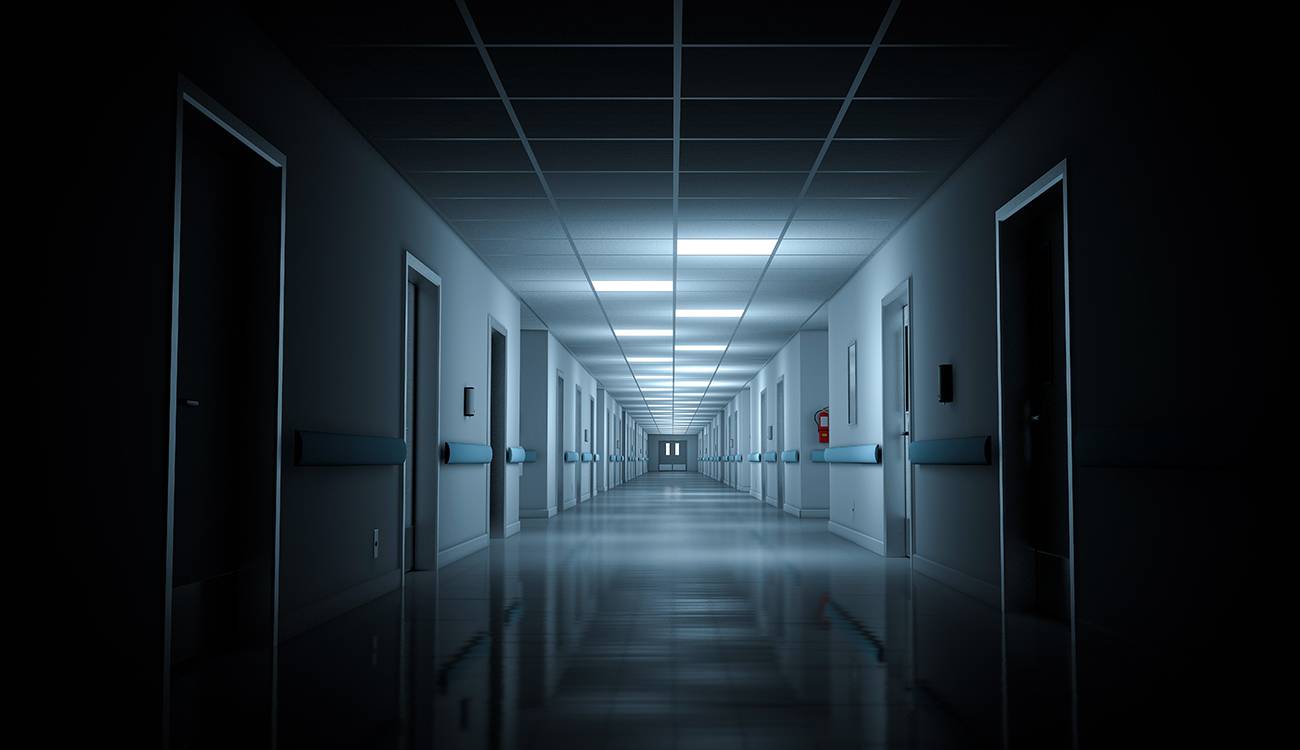
Sim Antics
Illustration by BlindsalidaRFU’s Virtual Health System will be a state-of-the-art simulation center designed to transform healthcare education and professional development. When completed in 2026, this immersive, multifaceted environment will emulate the full continuum of care, fostering interprofessional collaboration, reducing risk through safe skill-building, and enhancing decision-making to improve outcomes and reduce the cost of care.
Emergency Department: With six treatment rooms and a fully equipped trauma bay, this space engages learners to sharpen their focused history and physical exams, clinical procedure skills, and individual and team decision-making skills.
Collaboration Studio and Immersive 360° Room: Designed to foster team learning and innovation, this flexible space supports small-group workshops, team decision-making and collaborative problem-solving. The studio includes a 360° interactive video wall, allowing immersive, adaptable environments to be projected for high-impact training. One day, it may replicate the interior of an ambulance; the next, a home environment for hospital-at-home training or an outdoor disaster scene.
Sim Zones: Every simulation zone is equipped with audio-visual systems for real-time observation and debriefing, allowing learners and faculty to reflect on performance, identify improvement opportunities and reinforce best practices. Simulation modalities include standardized patients, high-fidelity manikins, task trainers and web-based platforms.
Surgical and Procedural Suite: Including a full operating room and a procedure room, this area immerses learners in perioperative care, surgical techniques and anesthesia workflows, enhancing their technical skills and familiarity with interprofessional roles in operative environments.
Labor & Delivery Suite: Students and teams manage standard and emergency situations during delivery and postpartum care using manikin- and standardized patient–based simulations with the goal to enhance maternal and fetal outcomes through collaborative care models.
Outpatient Clinic: With 14 exam rooms, this zone is a training ground for foundational and advanced communication, clinical reasoning, patient education and optimization of chronic disease management, reflecting the realities of ambulatory practice.

